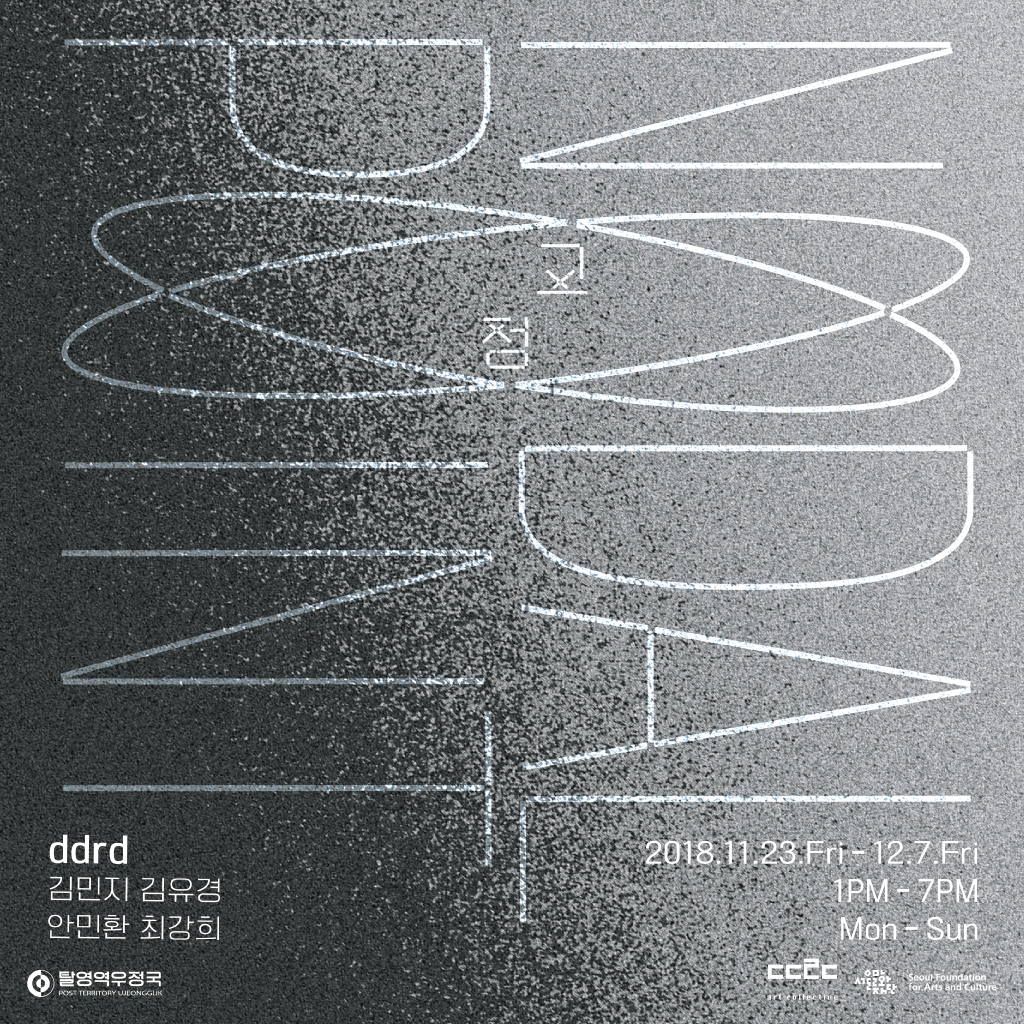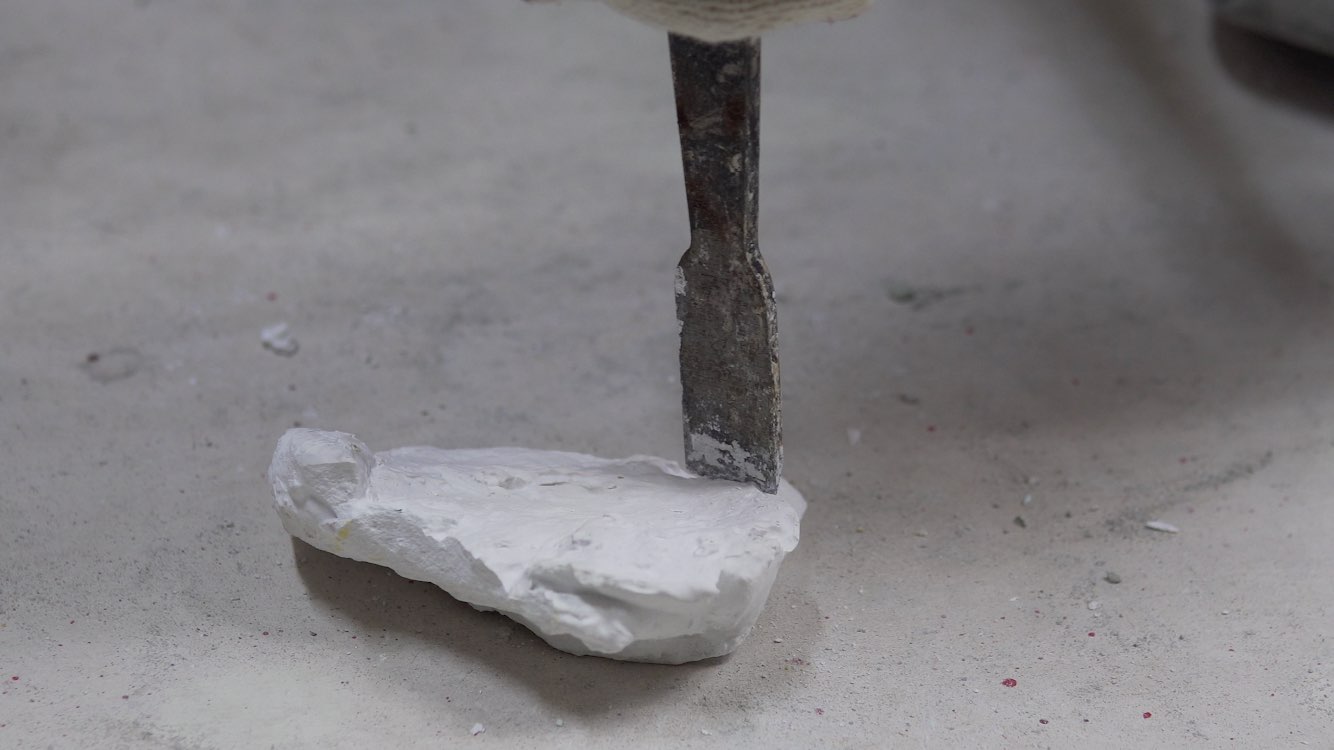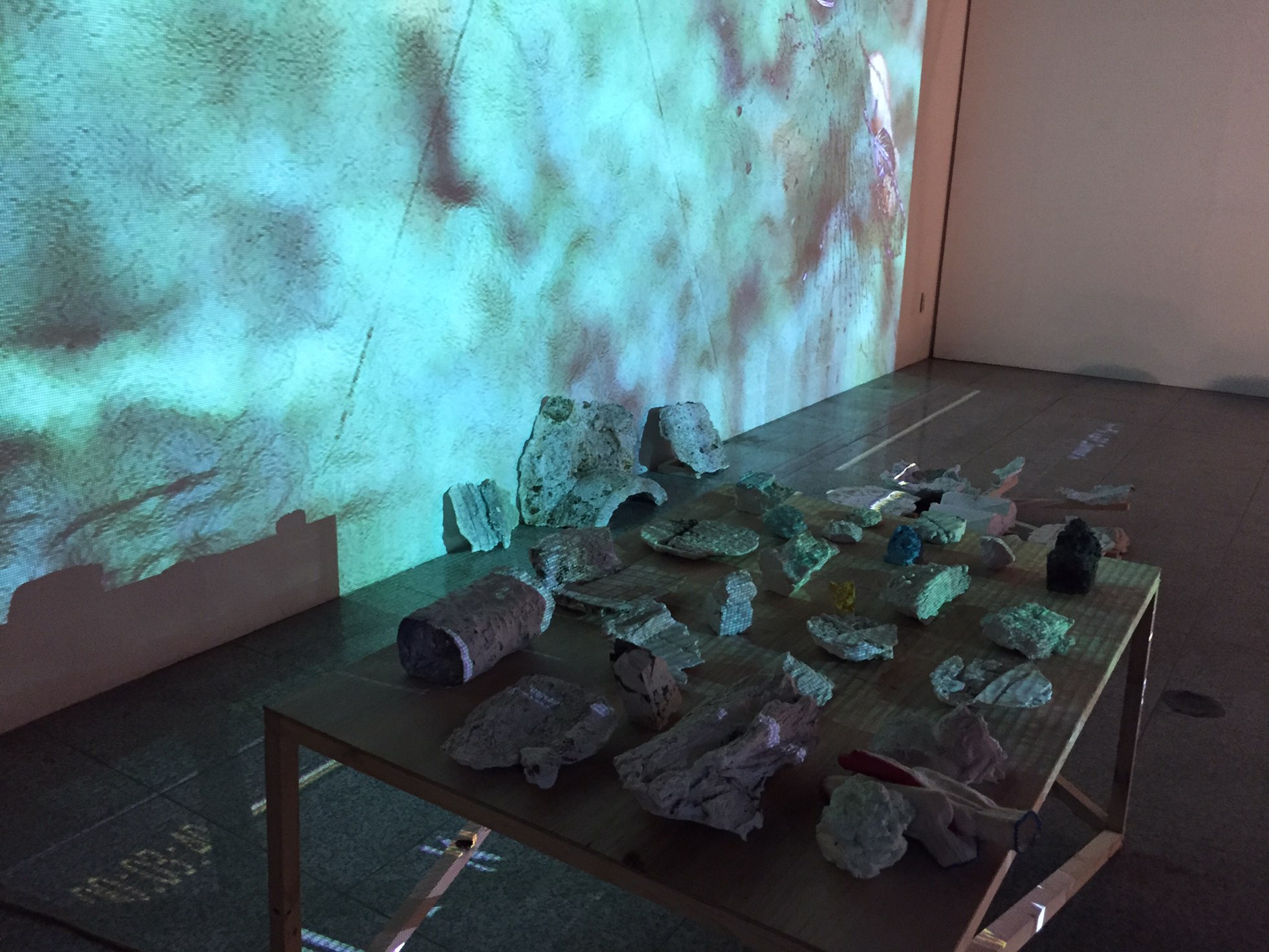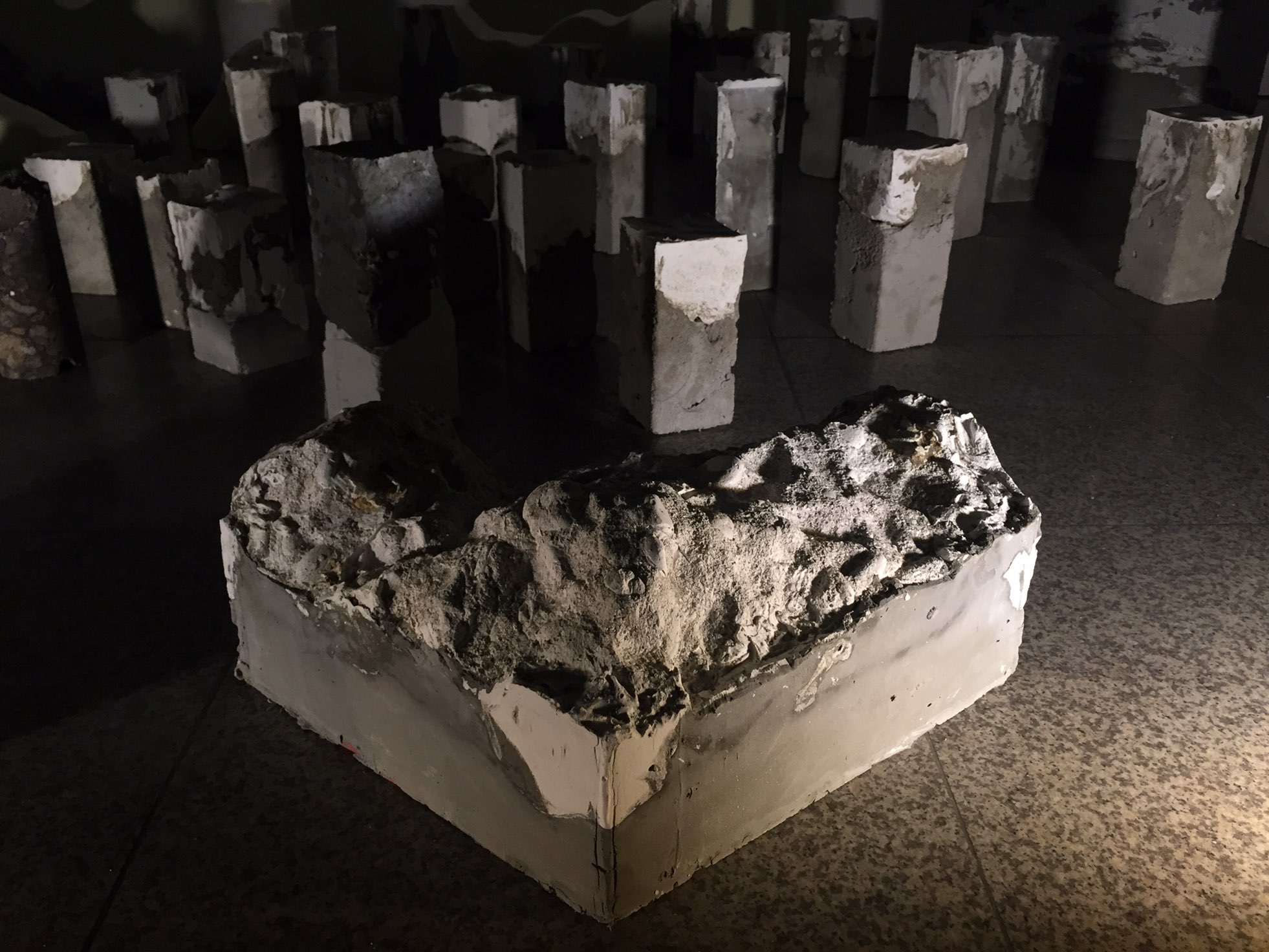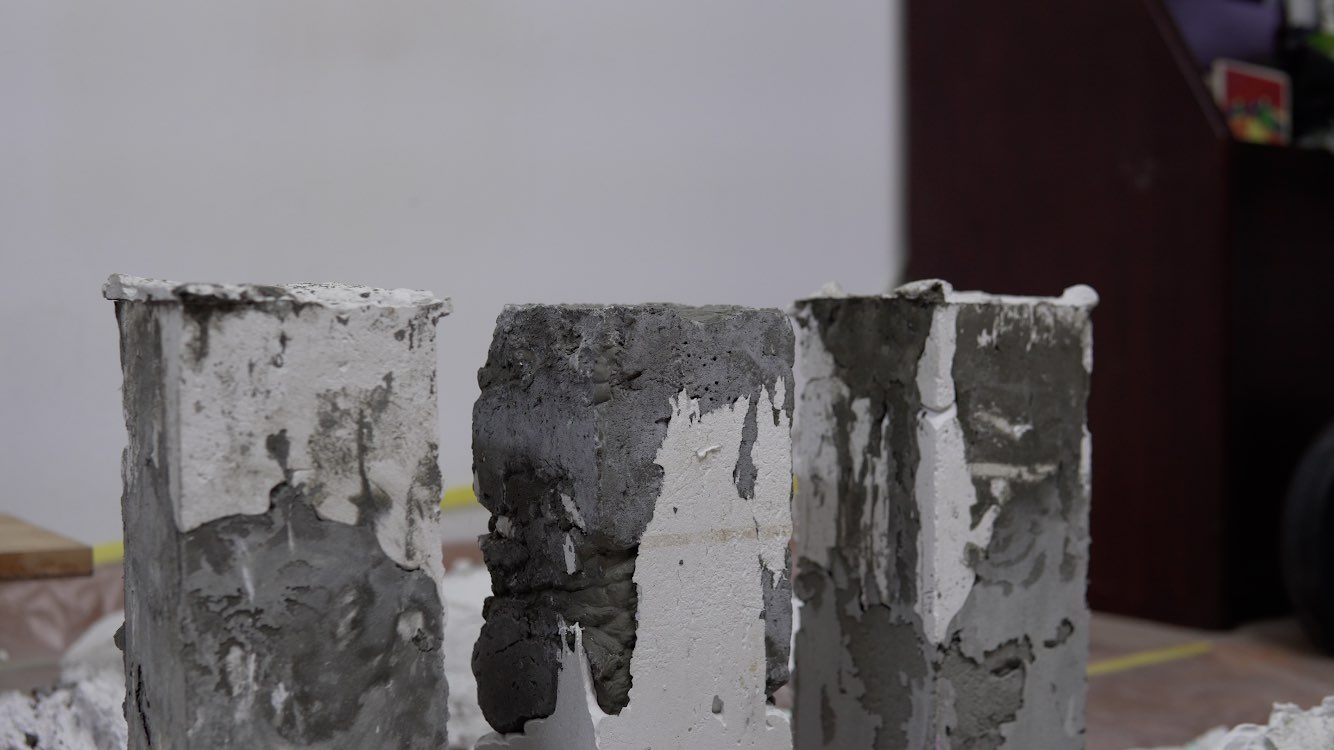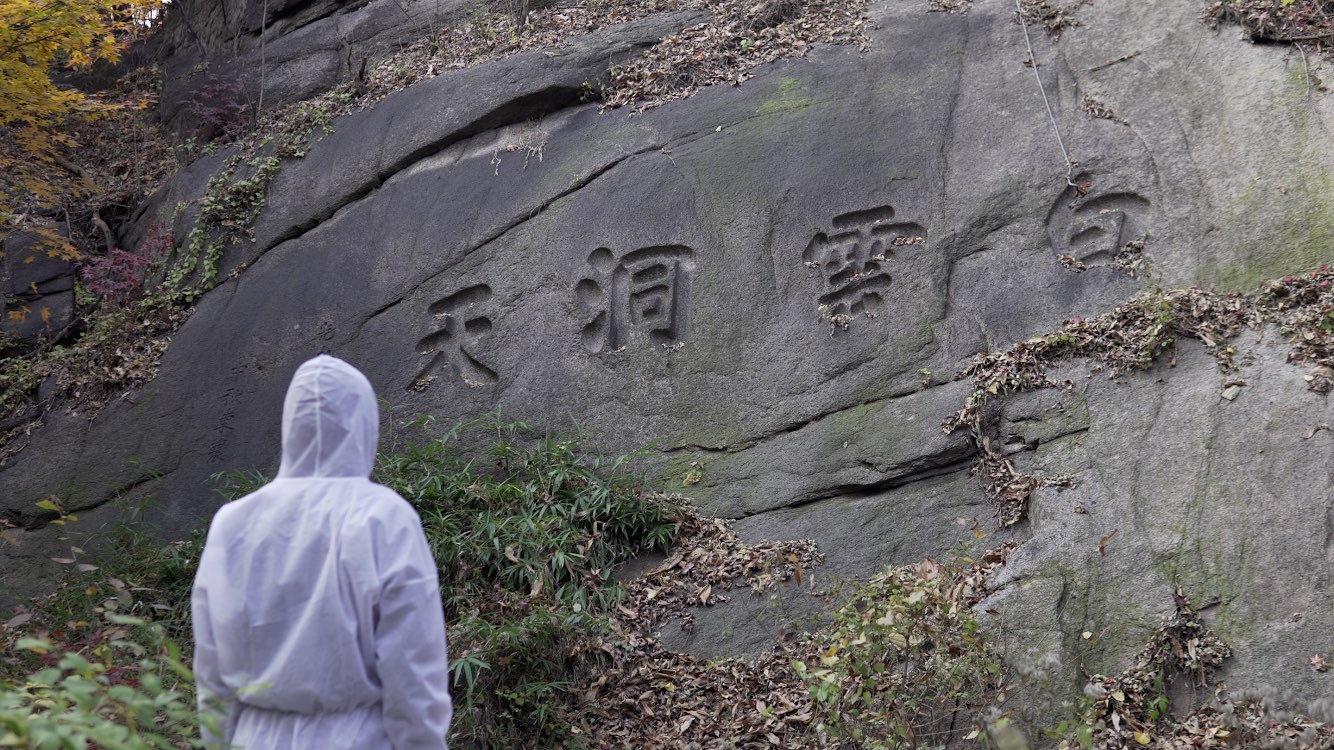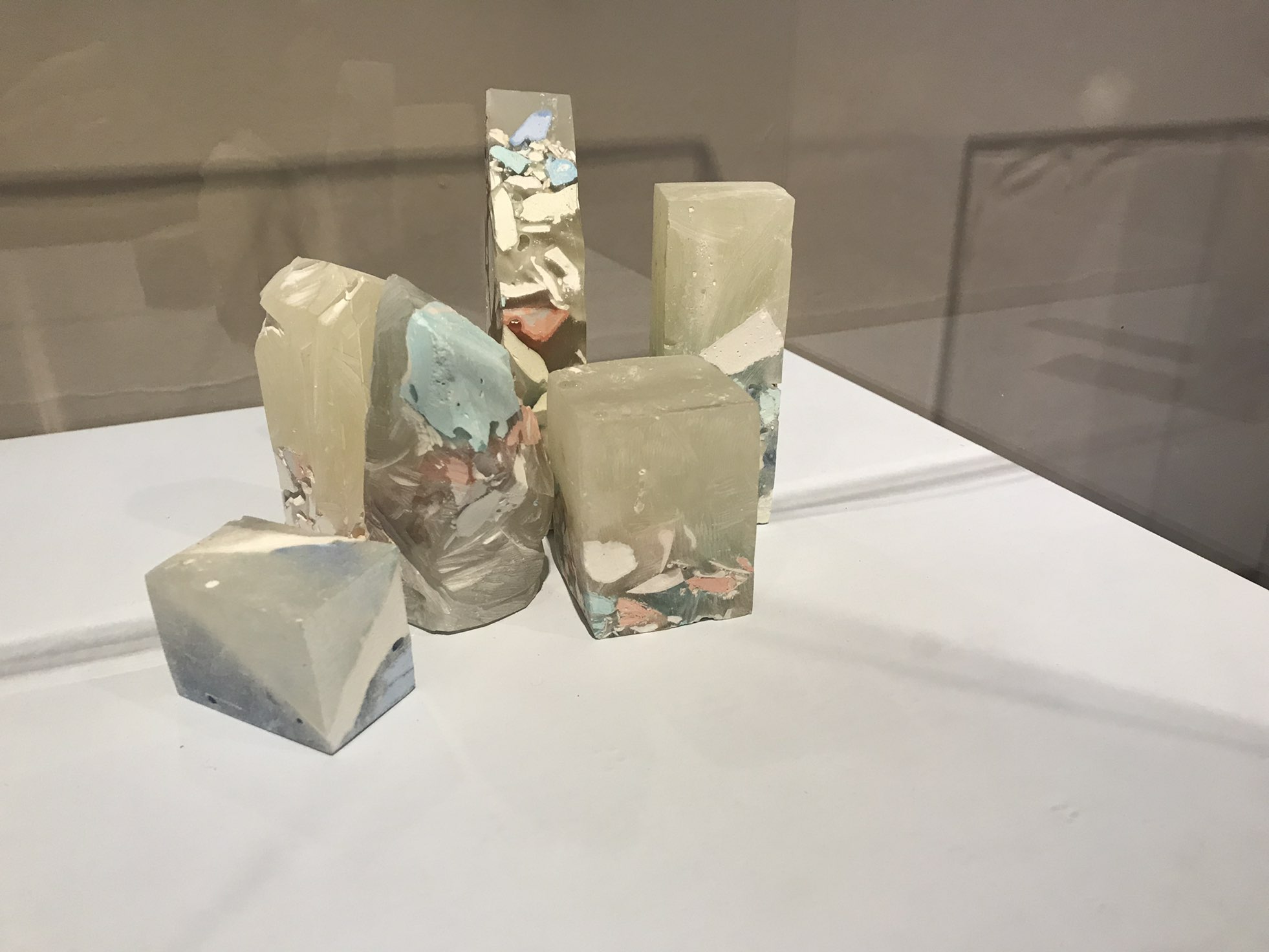ddrd_Nodal point
후원: 서울문화재단
2.
<Nodal Point 교점>은 장소 특정적 작업으로, 이를 통해 작가들은 역사의 흐름 속에서 잊혀 졌거나 주목받지 못했던 역사적인 사실들을 거시적이고 미시적으로 접근하여 탐사하며, 시대적 변화 속 개발로 인해 잊혀진 것들 사이의 연결 지점과 기억 장치들을 주제로 감각과 인식, 메커니즘 등의 개념을 탐사해가는 과정과 예술적 놀이를 통해 사회적 문제에 개입하고자 했다. 복개로 인해 사라진 물길에 대한 영감으로 시작된 본 프로젝트는 백운동천의 발원지이자 역사적 흔적들을 간직해온 백운장을 시작으로 희미해진 교점을 찾아가며 진행되었다. 이 모든 과정의 근원은 어쩌면 언젠가는 사라질 모든 것들이 보편적으로 갖는 한시성이라는 묘한 스펙터클에서 기인한 호기심일 수도 있겠지만, 남겨진 흔적 속에 내재된 다층적인 삶의 리듬을 발견하고 그것을 현재의 삶이 갖는 조건, 질서, 상황 및 문제들과 관계 지어보려는 의식일지도 모른다. 이러한 맥락에서 작품들은 사라진 물길의 역사를 가진 백운장의 장소적 특성(혹은 조건)을 토대로 이주의 상황, 반복되는 재개발, 비일상적인 풍경 등 자신이 직면하는 이슈들과 내밀하게 연결된다.
작품 제작에 앞서 우선 백운장의 역사적 기억의 켜를 들춰내는 선행 프로젝트를 진행하였는데, 이 선행 연구가 근대화 과정에서 필연적으로 벌어졌던 옛 물길 복개 과정인 개발의 역사적 흔적들을 탐구하는 것이었다면, 이번 <Nodal point 교점>은 그 흔적을 애써 지우거나 외면하지 않고, 백운장 곳곳의 표상들을 수집, 분류, 결정하고, 제스처가 반복되며 남긴 흔적 위에 작가들의 비일상적이고 함축적인 행위들이 덧씌워져 과거의 시간을 현재가 가로지르는(혹은 간섭하는) 상황을 시각화한다.
김민지, 김유경, 안민환, 최강희는 저마다의 방법으로 백운장에 남은 자취들을 더듬어 희미해진 시간과 기억을 건져 올린다. 몸으로 직접 경험하며 잔존물을 탐사하는 것에서부터 시작한 일련의 활동들은 단순히 폐허에 관한 낭만적 감상에 그치거나 남겨진 과거를 재배열하는 데에 머무르지 않는 대신 작가들의 구체적인 행위를 통해 – 오브제들을 탐닉하며 집단 행위를 하거나(영상 퍼포먼스), 흩어진 구조물을 찾아내거나(조각 설치), 미시사적 기억을 감각적으로 소환하거나(사운드 설치), 현실의 장소에 가상의 상황을 접목시키거나(인터랙티브 영상) – 현재의 의미를 획득 해나간다. 백운장이 그 장소성을 잃고 그 속에서 흐르던 시간이 과거로 함몰되려 할 때, 이러한 작가들의 적극적인 개입은 밀폐되어 있거나 유실되었던 장소의 의미를 수용자에게 능동적으로 전달할 수 있는 장치로서 기능하며, 이 지점에서 매개로써의 예술이 작동한다.
3.
<Nodal point 교점>의 중심축을 이루는 작업인 <물조각>은 백운장 터에서의 광범위한 실험을 통해 얻어진 결과물로 구성된다. 백운장과 복개된 물길 위의 표면들로 뜬 거푸집을 이용해 만들어진 복제본들은 일정하게 마모되어 하나의 물조각을 이루는데, 1층의 작업들은 주조를 통해 제작된 자연적, 인공적 조각이 설치되어 오브제로서의 상태를 강조하는 동시에, 백운장의 흔적 조각을 주조하기 위해 만들어진 거푸집 내부의 표면을 통해 사라진 물길의 감각들을 연상시키는 반면, 2층의 <물조각>은 현장에서 얻어낸 다양한 자연적, 인공적 침전물을 이용하여 완성한 큐브 조각으로, 근현대의 개발 과정에서 배출되어 밑바닥에 쌓여진 오염토사들을 불투명한 매질을 통해 극명하게 보여준다.
전시의 또 다른 작업인 <Weathering 풍화작용>은 <물조각>의 제작 과정을 기록한 영상 작업이다. 이 영상은 백운장 터에서 진행된 일련의 작업 과정과 작가의 작업실에서 이뤄진 실험들을 담는다. 각각의 요소들은 작업의 주요 모티브가 된 장소성과 이동, 시간성을 상기시키기도 하는데, 특히 백운장 터에서부터 시작되는 백운동천의 물길 위로 전개되었던 역사 속 다양한 사건들로 인해 사라진 미시사적 자취, 그리고 물이 흐르던 자리를 대신하여 인공적으로 자리 잡은 도로가 공존하는 현재의 모습을 통해 작업 속에서 영토 혹은 땅의 수직적, 수평적 이동과 변이 등에서 드러나는 자연과 인공의 역설을 동시에 반추해 볼 수 있다.
4.
전시 제목인 <Nodal Point 교점>은 천문학 용어로 두 개의 기준면끼리 교차하는 점을 말한다. 인공위성의 경우는 위성의 궤도가 적도면과 만나는 점을, 달의 경우는 달의 궤도가 천구의 황도면과 만나는 점 또는 적도면과 만나는 점을 일컫는다. 이 전시에서 시간의 개념은 여러 측면에서 강조되는데, 공간적 차이에 의한 시간의 흐름, 그리고 시간적 차이의 압축을 통한 공시성이 두드러진다. 백운장의 흔적 조형물 제작 및 설치 과정은 닳고 마모되는 양상과 연결되어 지나간 시간에 대한 예술적 번역과 재현의 불완전성을 보여준다. 또한 백운장으로부터 시작된 사라진 물길을 시각화하거나 비물질을 청각화하는 등 감각의 지점을 재구성하는데, 이는 지하세계와 긴밀한 네트워크를 형성하는 결절점 혹은 교점(Nodal point)과도 같다.
백운동천은 일제 강점기 하수도 개수사업을 통해 암거가 되면서 땅 아래로 자취를 감추었다. 인근 대부분의 지역은 복개되어 도로의 기능으로 변화되었고, 사라진 물길의 시작점인 백운장 터는 현재는 사유지가 되어 방치되어 있다. 그 물길이 연결되는 청계천마저도 근래에 인공적으로 복원되어 흐르고 있다는 점에서 하천 주변 시공간이 내포하는 역사적, 문화적 다양성과는 모순된 양상을 띤다. 탐사를 통하여 발견한 다양한 이야기들과 여전히 아스팔트 아래에 묻혀진 과거의 흔적들을 품고 있는 백운동천, 그 사라진 물길의 정체성은 여전히 상상 너머 형성의 과정에 있으며 가늠될 수 없는 다양한 미래의 가능성을 품고 있다.
1.
Dadarda Collective was formed to find new points through experimental collaborations by four artists who have been actively producing their works in the art scene. They have been constantly asking fundamental questions to society through artistic activities and works and, as an extension of the manner, they began their first underground exploration, “b1 Project”. “Nodal Point” introduces various works based on the exploration, including videos, performances, sound installation, sculptures, and multimedia interactive work at Post Territory Ujeongguk.
2.
“Nodal Point” is a collection of site-specific works which embodies the artists’ attempts to explore historical facts that were forgotten or not noticed in the history through macro and microhistorical approaches. With a theme of connection points and memories between the things forgotten during the development of society, the artists try to intervene in social problems by exploring various concepts such as sense, recognition, and mechanism and by performing artistic plays. The project began with an inspiration for the waterways that were lost due to closure.
The root of all this may be curiosity, which stems from the universal nature of everything, temporality, but it may be the awareness willing to discover the multilayered rhythms inherent in the remaining traces and relate them to the conditions, order, circumstances and problems we have today. In this context, the artworks are closely linked to the issues we face, such as migration, repeating redevelopment, and unusual scenery of daily life, based on the site characteristics (or conditions) of Baegunjang with the history of the lost waterway.
Prior to the production, a pilot project was conducted to capture the historical memories of Baegunjang, which was designed to determine the historical traces of development that inevitably took place in the course of modernization. However, through “Nodal Point”, the artist’s unusual and connotative practices are overlapped with collected, categorized, determined, and gestured traces around the place, which visualizes the intersection (or interference) between the past and present without trying to erase or ignore the traces.
Each member uses her/his own method to trace the traces left around Baegunjang to retrieve faded time and memory. A series of activities that begins with body-experience and exploration of the remnants do not simply remain as a romantic impression about the ruins or rearrangement of the past, but acquire the present meaning through specific actions—performing group activity focused on objects(video performance), searching for scattered structures(sculptures), sensuously summoning micro historical memories(sound installation), and overlapping virtual situations in a real space(interactive media). As Baegunjang loses its place and the time in it is about to sink into the past, the artists’ active involvementsserve as a device that can actively convey the meaning of a closed or lost place to the viewers.
3.
“Water Piece”, which forms the central axis of “Nodal Point”, consists of the results obtained from extensive experimentation at Baegunjang. Using molds copied from various surfaces around the site and the lost waterways and processing them, artists creates a single water piece. On the first floor, natural and artificial sculptures made from castings are installed to emphasize the state of an object, and serve as reminiscent of the lost waterway by exposing the surface inside the mold. In contrast, “Water Piece” on the second floor is a collection of cubes made with various natural and artificial sediment obtained from the site, which shows the contamination that has been discharged from modern development and piled up on the bottom.
Another work, “Weathering” is a video work that contains the production process of “Water Piece.” It shows a series of work processes that took place at the site and experiments conducted in the artists’ studio. Each element reminds the viewers of the sense of location, migration, and time which became the main motif of the work. There are microhistorical traces that disappeared due to various events in history around the waterway, and roads that are artificially located in the area where water used to flow are present, which let us ruminate the paradoxes in nature and artificiality revealed in the work, such as the vertical, horizontal movement and mutation of a territory or land.
The title “Nodal Point” is the astronomical term for the intersection of two reference planes. For satellites, it is the point that the orbit of a satellite meets the equator, in the case of the moon, the orbit of the moon meets the the plane of the ecliptic of the celestial sphere, or the equator. In this exhibition, the concept of time is emphasized in several ways, which highlights the passage of time by spatial differences and the disclosure by compressing time differences. The process of making and installing trace structures of Baegunjang shows the imperfectness of artistic translation and reproduction over time associated with the wearing process. It also reconstructs the point of sense, such as visualizing the lost waterway from the back-end or auditoryizing the debris, which can be considered as a nodal point that forms a close network with the underground world.
Because of sewage readjustment project during Japanese occupation, Bagundongcheon Stream was buried underground. Most of the surrounding areas have been transformed into roads, and the site of Baegunjang, the starting point of the lost waterway, is now private. Even the Cheonggyecheon Stream, which Bagundongcheon Stream connected to, is artificially restored and shows contradictions in the historical and cultural diversity embodied by the time and space surrounding the stream. The identity of the stream, which still contains various stories and tales discovered through the artists’ exploration and traces of the past buried beneath asphalt, is still in the process of formation and has various possibilities for the future.
–
□ 아티스트 토크 「nodal point 교점」
참여자: 최재원(독립큐레이터), 다다르다(프로젝트팀)
일시: 2018. 11. 30. (금) 오후 2시
장소: 탈영역 우정국 (서울시 마포구 독막로 20길42)
이번 프로젝트는 역사의 흐름 속에서 잊혀졌거나 주목받지 못했던 주체, 감각과 인식, 탐사의 과정, 예술적 놀이, 사회에 포함하려는 예술적 실천에서 시작했다. 이처럼 사라진 것들이 갖는 “한시성”, 남겨진 흔적 속 희미해진 교점을 찾아가며 감각과 인식은 “어디”까지 확장될 수 있을까? 그리고 “어떠한” 다양한 미래의 가능성을 품고 있을까? 우리는 자연, 사물을 넘어, 매개로써 예술은 어떤 것이 될 수 있을지를 상상해본다. 이 토크는 지나간 시간에 대한 예술적 번역과 실천이 과연 가능한지 반성하고 질문해보는 자리가 될 것이다.

